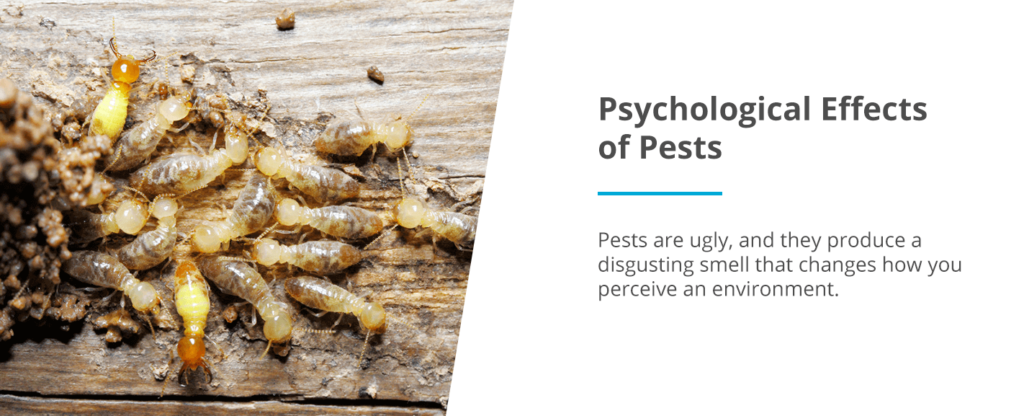All About Eco Bed Bug Exterminators Dc
All About Eco Bed Bug Exterminators Dc
Blog Article
4 Simple Techniques For Eco Bed Bug Exterminators Dc
Table of ContentsHow Eco Bed Bug Exterminators Dc can Save You Time, Stress, and Money.The smart Trick of Eco Bed Bug Exterminators Dc That Nobody is DiscussingAn Unbiased View of Eco Bed Bug Exterminators Dc10 Simple Techniques For Eco Bed Bug Exterminators DcGetting The Eco Bed Bug Exterminators Dc To Work
Because chemicals are hazardous, they are likewise potentially dangerous to people, animals, other organisms, and the atmosphere. People who use chemicals or consistently come in contact with them should understand the relative poisoning, prospective wellness results, and preventative steps to lower exposure to the items they use. Risk, or danger, of using chemicals is the possibility for injury, or the degree of threat included in utilizing a pesticide under a provided set of problems.
Applicators can decrease or almost eliminate exposure-- and thus decrease threat-- by complying with the tag directions, utilizing personal safety clothing and devices (PPE), and managing the pesticide effectively. As an example, greater than 95 percent of all pesticide direct exposures originate from dermal exposure, mostly to the hands and lower arms. By putting on a pair of unlined, chemical-resistant gloves, this kind of exposure can be virtually eliminated.
The harmful results that occur from a single direct exposure by any type of route of entrance are described "intense impacts." The four routes of exposure are dermal (skin), breathing (lungs), oral (mouth), and the eyes. Acute poisoning is figured out by checking out the dermal toxicity, breathing toxicity, and dental toxicity of guinea pig.
Some Known Questions About Eco Bed Bug Exterminators Dc.
Severe toxicity is measured as the amount or concentration of a toxicant-- the a.i.-- needed to kill 50 percent of the animals in a test populace. This measure is normally expressed as the LD50 (dangerous dose 50) or the LC50 (deadly concentration 50). In addition, the LD50 and LC50 values are based on a single dosage and are tape-recorded in milligrams of chemical per kilo of body weight (mg/kg) of the test animal or partly per million (ppm).
The lower the LD50 or LC50 worth of a pesticide item, the better its toxicity to people and pets. Chemicals with a high LD50 are the least hazardous to people if utilized according to the instructions on the item label. The chronic poisoning of a pesticide is determined by subjecting examination animals to long-term direct exposure to the active ingredient.
The chronic toxicity of a pesticide is more tough than intense toxicity to establish with laboratory evaluation. Products are classified on the basis of their loved one severe toxicity (their LD50 or LC50 worths). Chemicals that are categorized as extremely harmful (Toxicity Group I) on the basis of either dental, facial, or inhalation poisoning need to have the signal words DANGER and POISON printed in red with a head and crossbones sign plainly displayed on the front panel of the plan label.
The acute (solitary dose) oral LD50 for chemical products in this team ranges from a trace total up to 50 mg/kg. As an example, exposure of a few drops of a product taken orally might be fatal to a 150-pound individual. Some chemical items have just the signal word threat, which tells you nothing about the severe toxicity, just that the item can cause severe eye damages or severe skin irritation
Eco Bed Bug Exterminators Dc for Dummies
In this classification, the acute dental LD50 important link arrays from 50 to 500 mg/kg. A teaspoon to an ounce of this product might be fatal to a 150-pound individual (how to get rid of bed bugs). Chemical products identified as either somewhat hazardous or relatively harmless (Toxicity Groups III and IV) are required to have the signal word CAUTION on the pesticide label

All pesticide toxicity valuesPoisoning including the Consisting of, can be found on discovered product's Material Safety Product Security (MSDS). Pesticide labels and MSDS can be obtained from retailers or produces - https://slides.com/ecobedbug3xt. The signs of pesticide poisoning can vary from a light skin inflammation to coma or also fatality.
Individuals likewise differ in their level of sensitivity to different levels of these chemicals. Some people might show no reaction to a direct exposure that might create extreme ailment in others (bed bug exterminator). As a result of potential wellness worries, pesticide users and handlers must recognize the common symptoms and signs of pesticide poisoning. The effects, or symptoms, of chemical poisoning can be extensively defined as either topical or systemic.
Eco Bed Bug Exterminators Dc for Dummies
Dermatitis, or swelling of the skin, is approved as one of the most commonly reported topical impact related to chemical direct exposure. Symptoms of dermatitis range from reddening of the skin to rashes and/or blisters. Some individuals have a tendency to cough, wheeze, or sneeze when revealed to chemical sprays. Some people respond to the solid odor and annoying effects of oil extracts made use of as carriers in chemical items.
This signs and symptom typically subsides within a couple of minutes after a person is eliminated from the direct exposure to the irritant. Nevertheless, a response to a pesticide product that triggers somebody not just to sneeze and cough yet additionally to establish serious acute respiratory system signs is most likely to be a true hypersensitivity or allergy.
Systemic results are rather different from topical results. They typically happen away from the original point of get in touch with as a result of the chemical being absorbed right into and distributed throughout the body. Systemic results often consist of nausea, vomiting, fatigue, frustration, and digestive disorders. In innovative poisoning cases, the person might experience modifications in heart rate, problem breathing, convulsions, and coma, which could lead to fatality.
Report this page